Even if you haven’t heard of Games Workshop, you might be familiar with their games.
The company behind Warhammer and Warhammer 40,000 has been working day and night to build two of the biggest brands in tabletop miniatures gaming. Started as a manufacturer of traditional games, the English-based publisher became an importer/distributor for early roleplaying games like Dungeons & Dragons before developing their own miniatures. Originally these miniatures were simply add-ons, luxury items that bridged the line between D&D’s wargame roots and its roleplaying elements. In 1983, Games Workshop launched a game that would shape the industry forever: Warhammer (also known as Warhammer Fantasy Battles and Warhammer Fantasy).
Warhammer was a tabletop wargame which simulated clashes between huge forces, using custom miniatures to represent armies and copious amounts of dice to resolve the conflict, all bolstered by a rich setting that reimagined classic fantasy concepts. Sure, there were hordes of warmongering Orks lifted straight from Tolkien, but there were also more innovative factions like Lizardmen and Chaos Dwarves. Medieval artillery boomed as unreliable magic swept across the battlefield. Four years later, GW created a sci-fi version of the game and setting, translating some of the Fantasy line and adding new factions as well to create Warhammer 40,000 (often abbreviated as WH40K or simply 40K). Both games were full of sardonic humor, factions driven by self-serving ideologies, and endless warfare. Above all they were carried by Games Workshop’s distinct miniatures, which established the visual style of the game and attracted hordes of hobbyists willing to build and paint their own armies.
Over the intervening 40 years, Games Workshop has expanded worldwide and the games themselves have evolved. As of writing, 40K is on its 9th edition, while Fantasy was discontinued in 2015 and completely retooled as Age of Sigmar (now on its 3rd edition). One major factor in GW’s growth has been their willingness to license their IP to many different video game publishers. As a result, there are dozens of games available across multiple game lines, platforms, and genres. Not all of these games are equal, though. For every long-standing classic, there’s a handful of disposable mobile titles or games which just didn’t quite hit the mark. Here we take stock of the most notable Warhammer Fantasy, Age of Sigmar, and 40K games, as well as a few more from GW’s catalog.
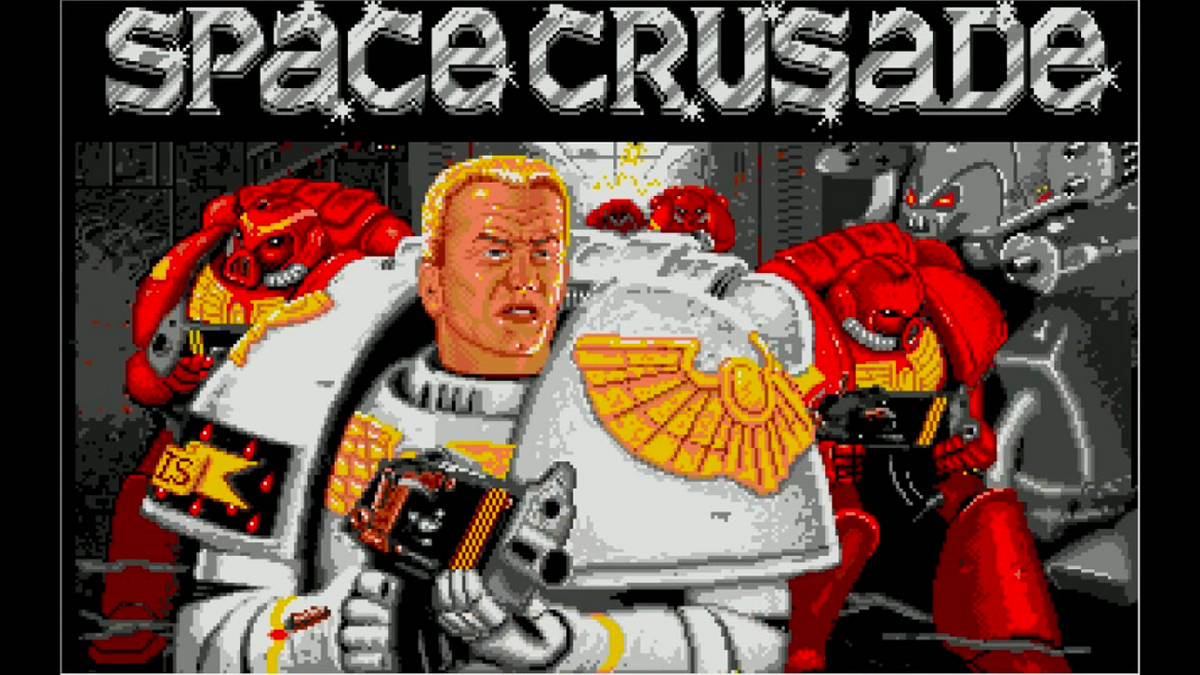
For the Emperor! In 1992, Space Crusade stepped into the breach as the very first video game set in the WH40K universe. This adaptation of the board game of the same name (itself a descendant of the popular HeroQuest, which in 1991 was the first GW game to receive a digital release) is about what you’d expect, but hey: even the greatest Space Marine Chapter started with a single Primarch. And Space Crusade would indeed spawn legions of subsequent 40K video games, some as rad as the Space Wolves and others as cursed as the Lamenters.
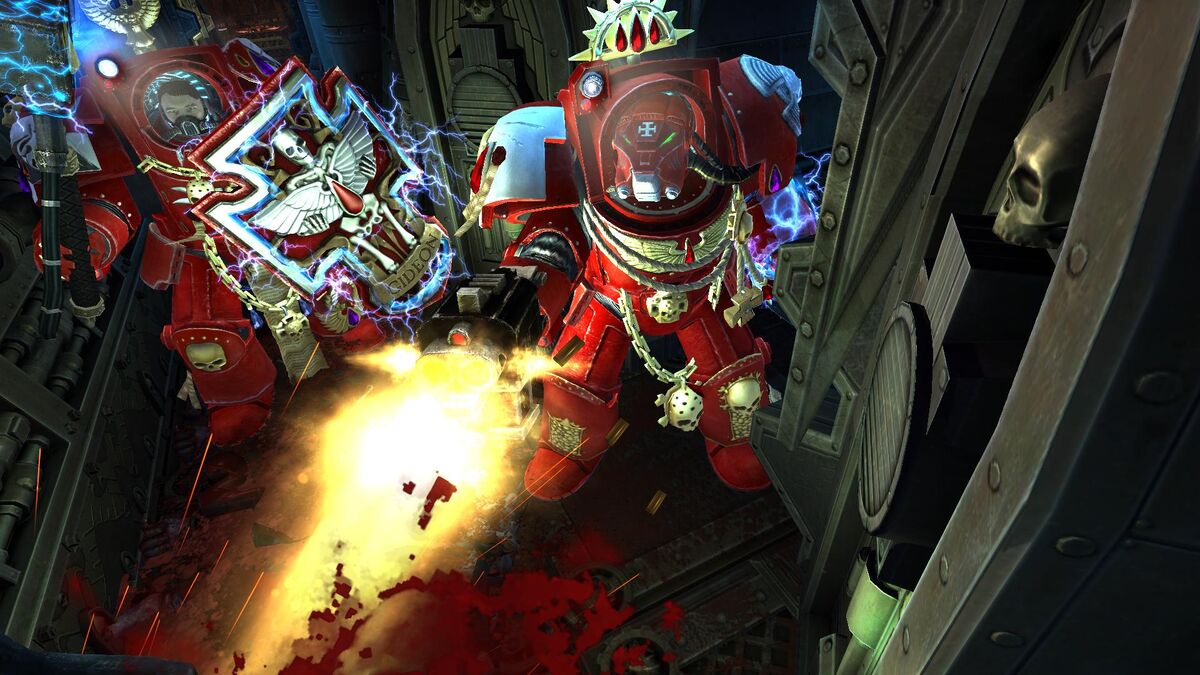
Like Space Crusade, Space Hulk started life as a standalone tabletop game in the 40K universe. This 2-player competitive game about Space Marines exploring a derelict spaceship had one side play as the slow but powerful Space Marines and the other as the quick, numerous, and fragile Tyranids. In adapting it for digital play, Electronic Arts focused solely on playing as the Space Marines and opted to make it a tense real-time game, stepping away from the tabletop mechanics in order to provide a better game experience. Ultimately that choice resonated with players, and helped build the 40K brand early on. Curiously, the third iteration of the game in 2013 went back to being a literal adaptation of the tabletop game, rather than carrying on the original’s legacy which was so successful.
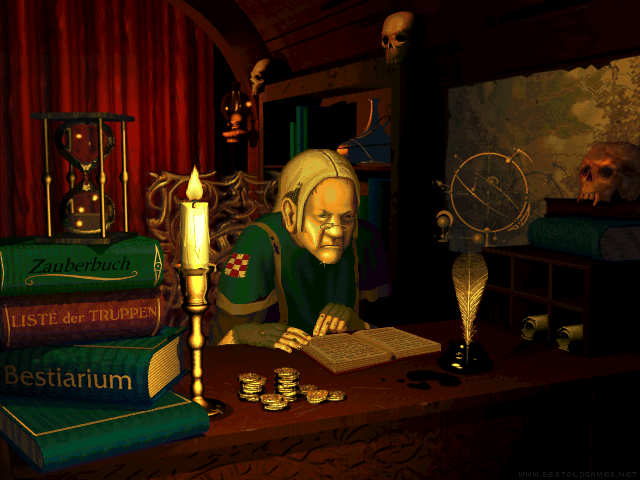
The first official Warhammer Fantasy video game was Shadow of the Horned Rat, published by Mindscape in 1991. Years before the Total War series would define the genre, Shadow of the Horned Rat offered a rich fantasy campaign packed with real-time pausable combat at the scale that made Warhammer a hit on the tabletop. Building and managing their Imperial army over multiple battles, players took command of everything from massive units of infantry to individual heroes powered by magic spells and items. Keeping revenue high to replace lost soldiers or hire mercenaries added plenty of wrinkles to the affair, as did the heavy narrative elements that connected each battle into an entertaining story. The sequel, Dark Omen (1998), made a number of improvements to graphics and gameplay including the introduction of a multiplayer mode.
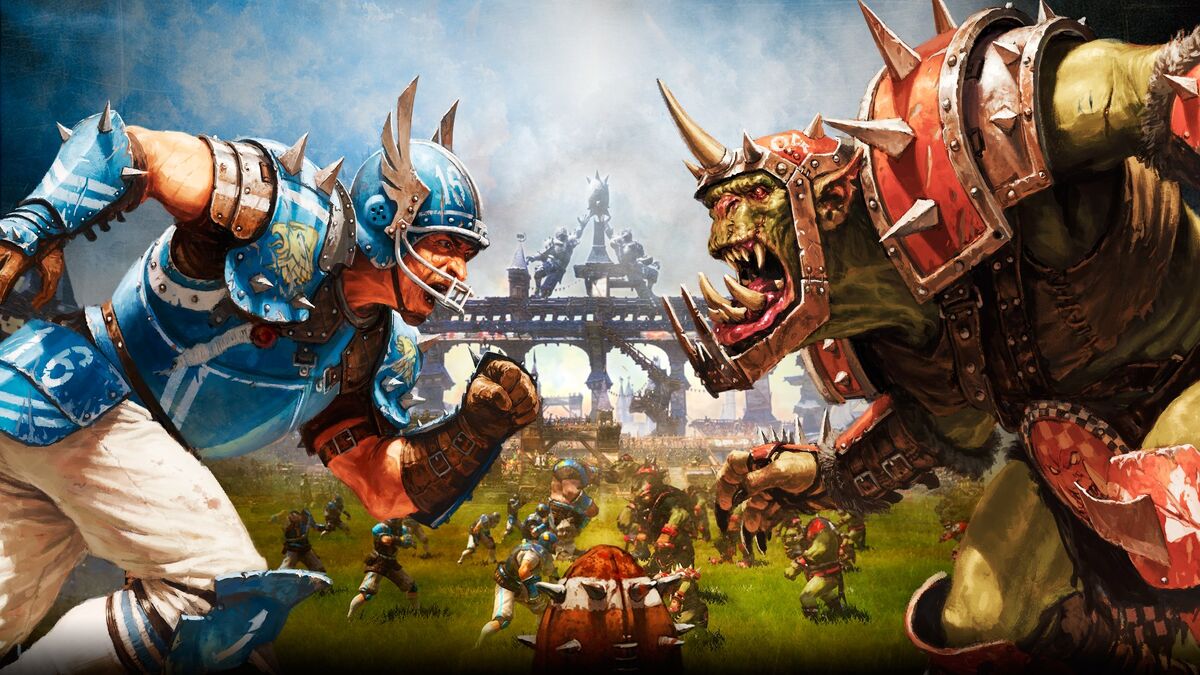
Ah, Blood Bowl: this spinoff of the Warhammer Fantasy line presents an absurd mix of real-world sports filtered through the Warhammer setting. Players oversee their team through a campaign of matches that take the best parts of several different sports and smush them all together with a heaping dose of cartoonish violence. The game’s blend of strategy and dice-rolling hits on the essence of Warhammer’s appeal: a little bit thoughtful, a little bit zany, and a whole lot of fun.
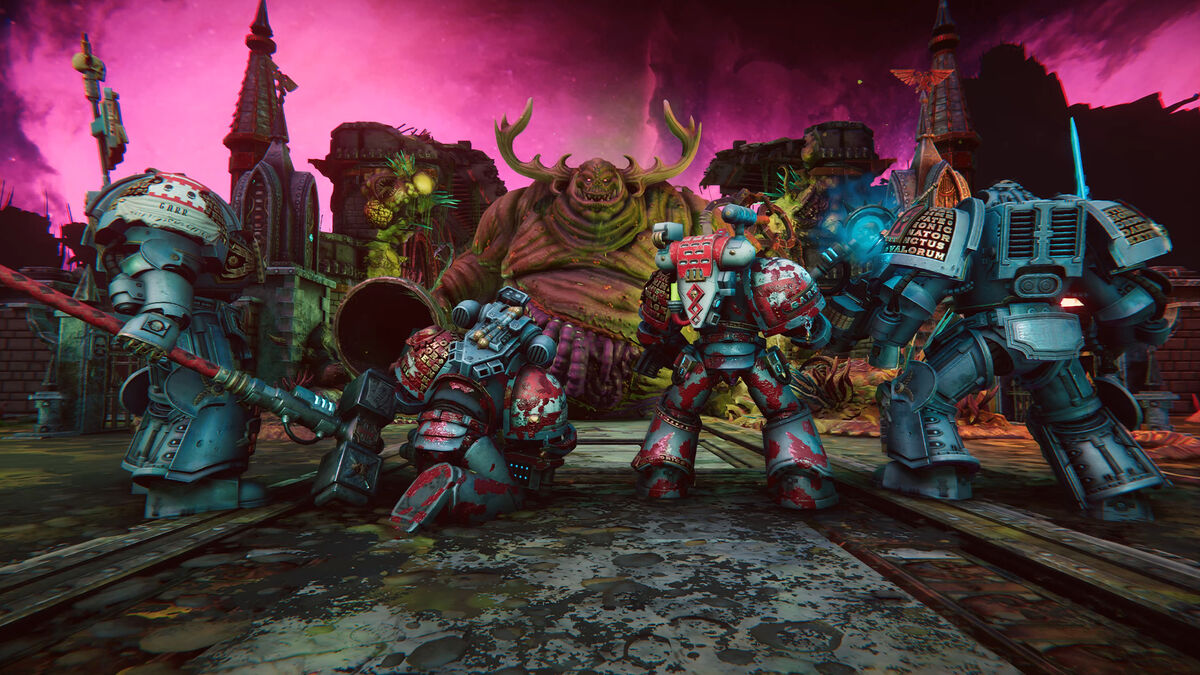
The late 1990s saw an explosion of 40K games that leaned into the tabletop game’s turn-based structure, with Final Liberation (1997) recreating 40K’s Epic line and Rites of War (1999) featuring the mysterious Eldar faction. However, it’s 1998’s Chaos Gate that stands out. Chaos Gate’s use of action points and emphasis on squad-based heroics rather than the march of armies would drive a lot of subsequent designs. Drawing comparisons to Soldiers of War and XCOM, Chaos Gate (and the exhaustingly-named sequel, 2022’s Warhammer 40,000: Chaos Gate – Daemonhunters) set the standard for future GW games like Battle Sector (2021).
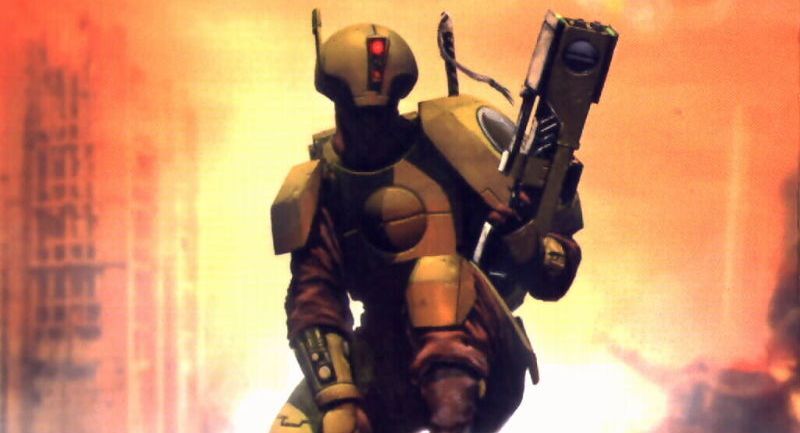
This relatively straightforward FPS might not have set the world on fire, but it deserves a mention because of its protagonist. In a sea of games starring the Space Marines and other self-righteous servants of the Imperium, Fire Warrior stands out for featuring the T’au Empire. That makes a lot of sense in the context of the tabletop line: the T’au had only been added as a playable faction in 2001, so a game about them served as both good marketing and a helpful hook for new players wanting to explore the lore behind these enigmatic aliens. Regardless, it’s always nice to get a peek at other factions from time to time.
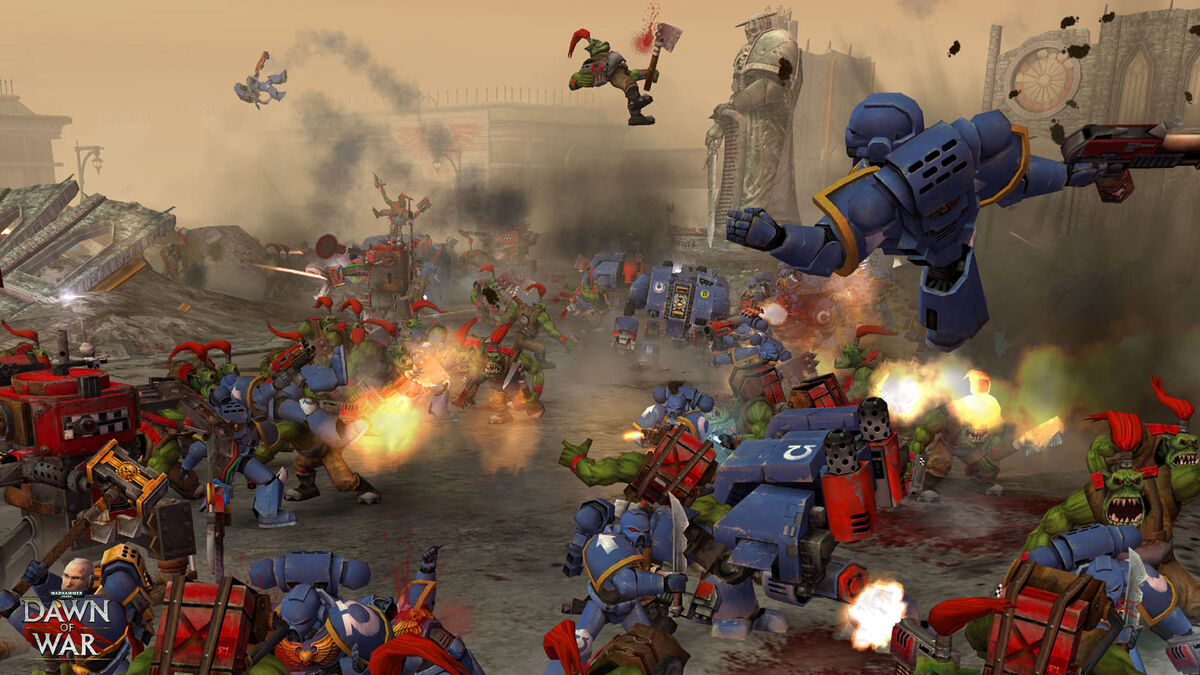
The Dawn of War series has taken on almost mythic proportions among some 40K fans. These real-time strategy games took advantage of a pre-existing player base raised on classics of the genre like Command & Conquer, Warcraft, Starcraft, and many more. Marrying traditional RTS play with the “endless war” of 40K was a natural fit. Beyond that, the games’ playable factions allowed players to step beyond the Imperium and experiment with Eldar, Orks, Tyranids, and others. Because of their deep immersive nature and their excellent replayability, these games remain popular and enduring even as they age.
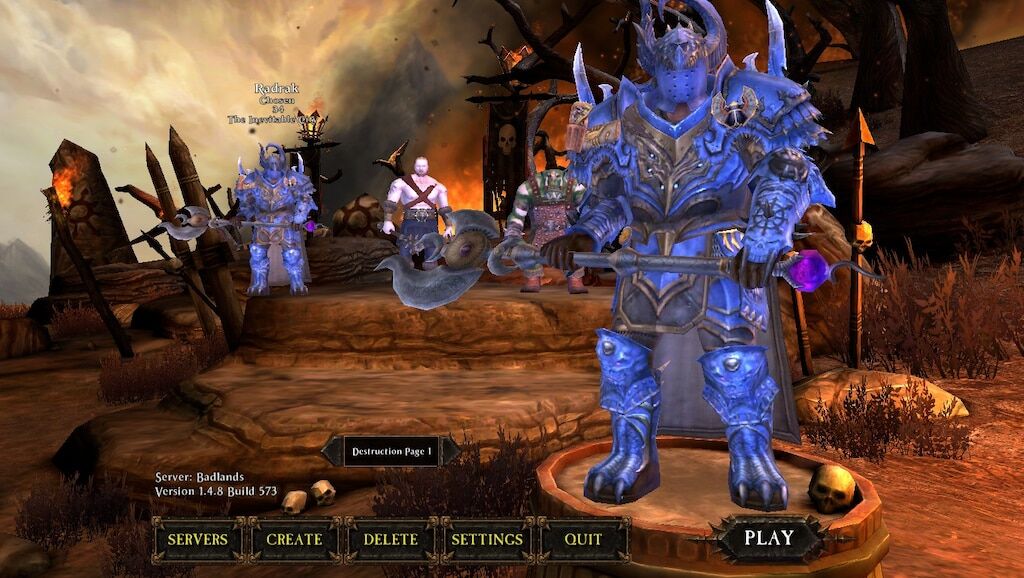
Like many game publishers, Games Workshop took advantage of the MMORPG craze that started in the late 1990s and continued unabated through the 2000s. In the case of Warhammer Online, adapting the tabletop universe to the MMO format meant emphasizing near-constant player-versus-player combat in an open world environment. Characters could be created using one of 6 available races, each belonging to one of 2 factions (Order and Destruction). With significant options for customization and the promise of rolling warfare across every moment of the game, Warhammer Online immersed players in the universe in a whole new way. Sadly, the official servers shut down in 2013, though a private server (the Return of Reckoning project, initially started by one of the Age of Reckoning developers) is still active as of this writing.
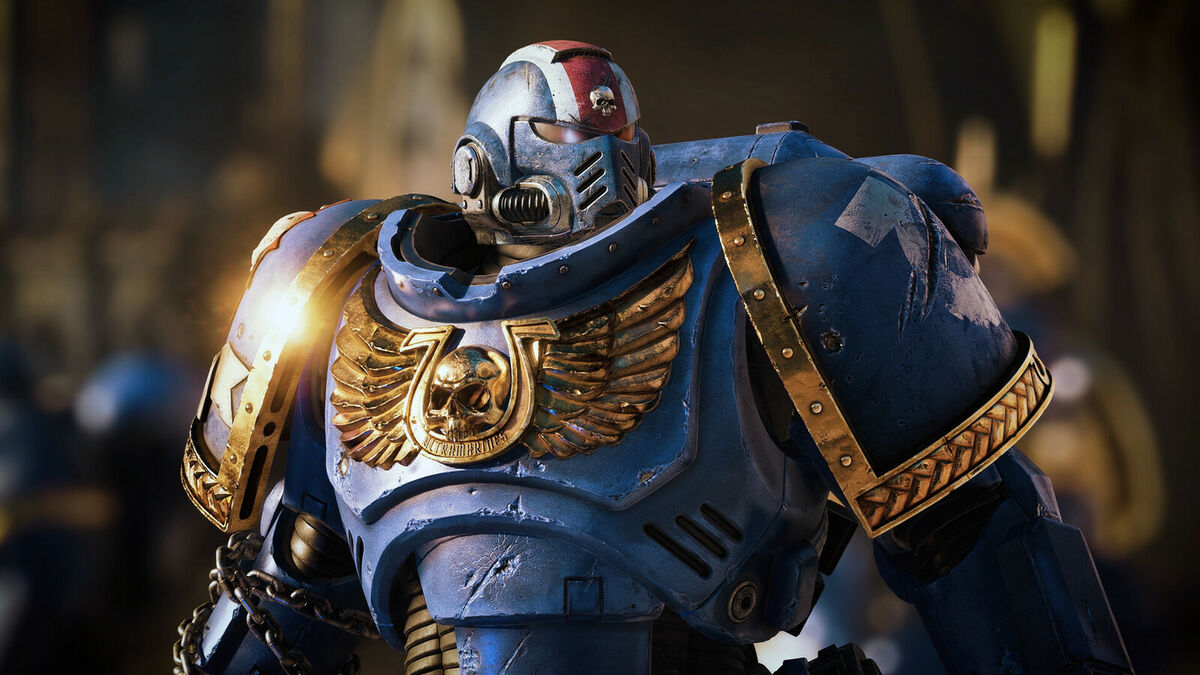
While most of the games on this list lean more towards thoughtful strategy than button-mashing, 2011’s Space Marine is a serviceably fun third-person shooter that does exactly what’s expected. As the titular Space Marine (Captain Titus) you’ll shoot, blast, and chainsword your way through hordes of Orks and Chaos forces in pursuit of whatever MacGuffins the level requires. One of the best features, though, was the online multiplayer mode’s Customizer, which let players swap out features and change their Marine’s color palettes to create their own incredible Marine Chapter just as they might on the tabletop. In 2021 a long-awaited sequel was announced, promising a return to one of the better 40K games available.
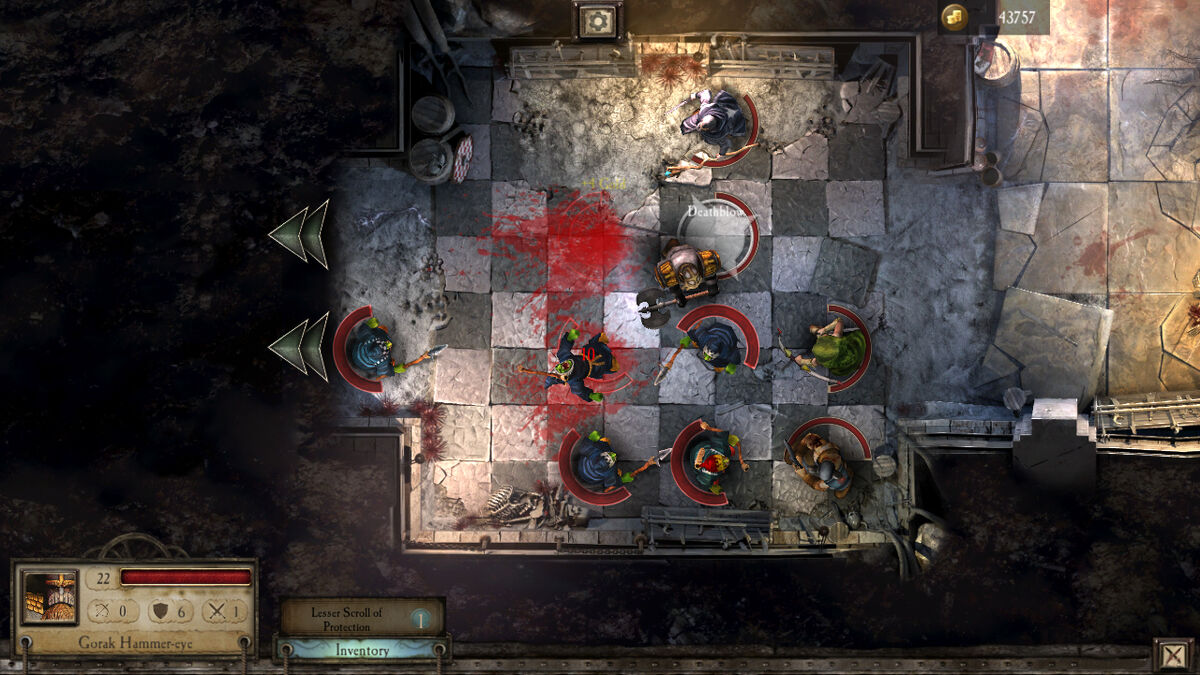
As is perhaps obvious by now, one of the ways that Games Workshop has kept Warhammer in the public eye is by releasing traditional board games set in the Warhammer universes. Warhammer Quest is one such example: released in print in 1995, this HeroQuest successor doesn’t reinvent the wheel but does give it a Warhammer spin. The major innovation here is the introduction of a “roleplay book,” which leans more towards an expanded campaign mode than a full RPG experience. That add-on made it perfect for digital adaptations, stringing together board-based battles with long-term decisions on how best to evolve your team of dungeon delvers. The Warhammer Quest series didn’t necessarily make a huge splash, but those looking for a strategy-RPG hybrid might find it satisfactory.
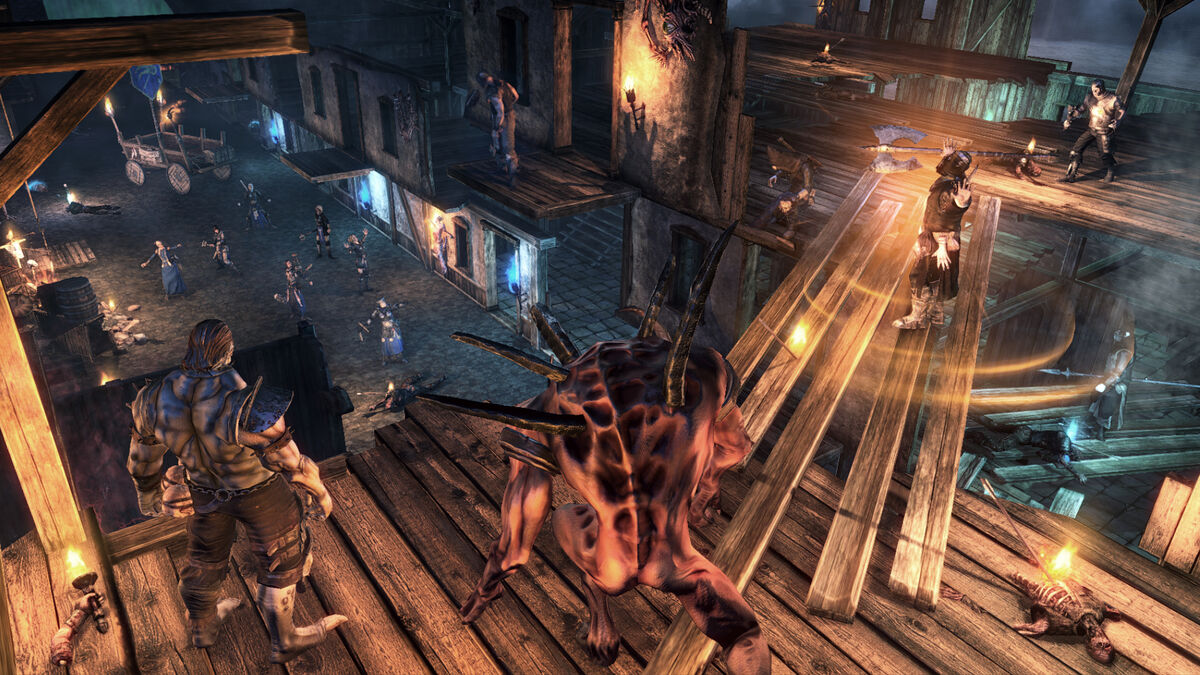
Mordheim is a skirmish-level campaign version of Warhammer Fantasy focused on ragtag warbands of individualized fighters, similar to 40K’s Necromunda. This is a pretty cool premise, so it only makes sense to develop a turn-based strategy game out of it. Gather your brawny warriors, equip them with ever-bigger swords and spikier armor, and throw them at similarly-clad enemies: what’s not to like? Unfortunately, quite a lot. Mordheim: City of the Damned was generally panned by critics for being, among other things, dull and infuriating. It’s noteworthy perhaps for the potential it had, not for the game it was.
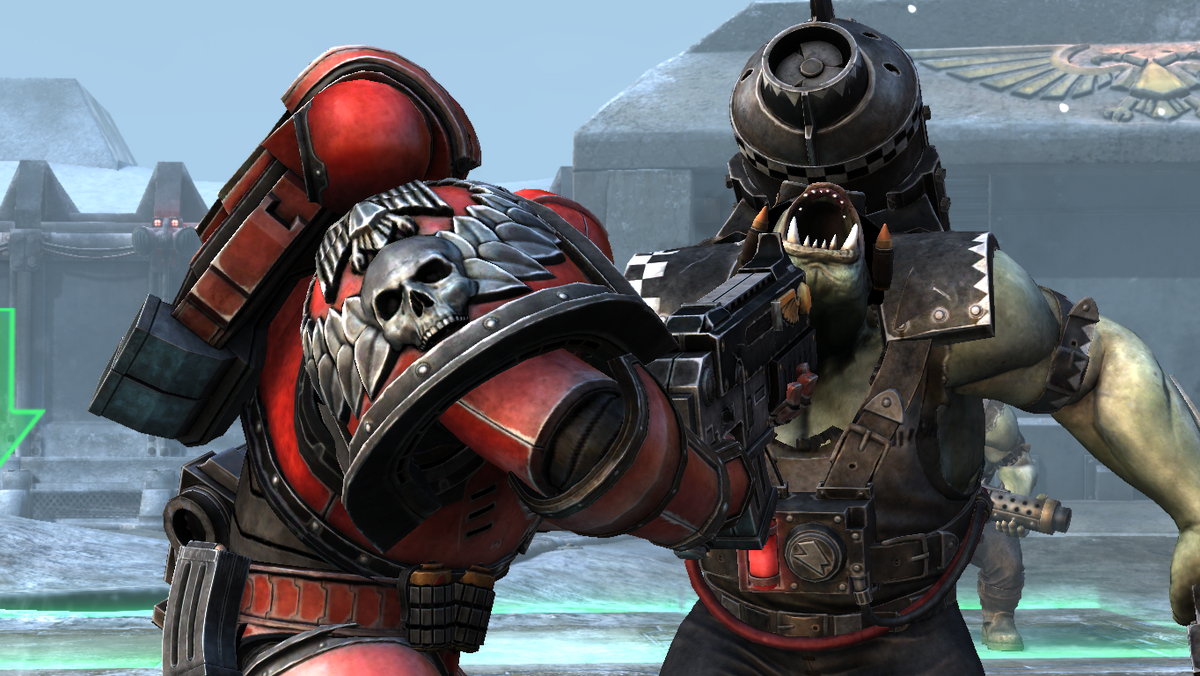
It was only a matter of time before WH40K, a game that emphasizes throwing giant handfuls of dice over and over until your opponent relents rather than risk chipping the paint on their expensive plastic models, would meet up with Chess, the foremost abstract game that has fascinated some of the world’s greatest analytical minds for centuries. Look, it doesn’t really matter whether Regicide is good or bad. It’s a testament to 40K’s longevity and reach that somebody even tried this mashup, replete with special rules that completely change everything about Chess. And any game that makes Orks a default playable faction is good in my book, even if they’re opposed by the insufferably emo Blood Angels. Unfortunately, the publisher (Hammerfall) shut down all of the game’s servers in October of 2022, meaning that anyone begging for 40K Chess will have to look elsewhere.
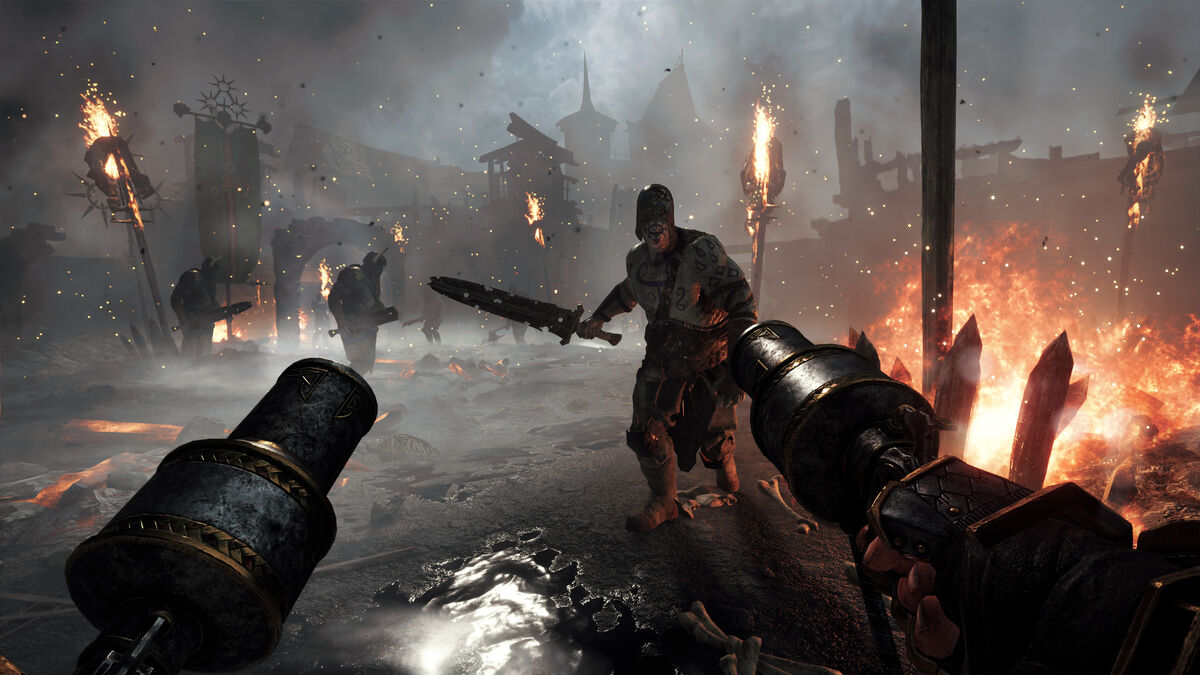
Sometimes the best games are the ones that don’t stray too far from their inspiration. That’s certainly true for Vermintide. These action-packed co-op FPS games in the style of Left 4 Dead keep the enemies coming and the intensity at a fever pitch. With greater emphasis on melee combat and a loot/crafting system to improve characters’ weaponry, the visceral impact of Vermintide made for good products, if not particularly revelatory ones. More importantly, these are rare among the Games Workshop world for being proper co-op games. In a setting dominated by war, it’s nice to bring some friends along from time to time.
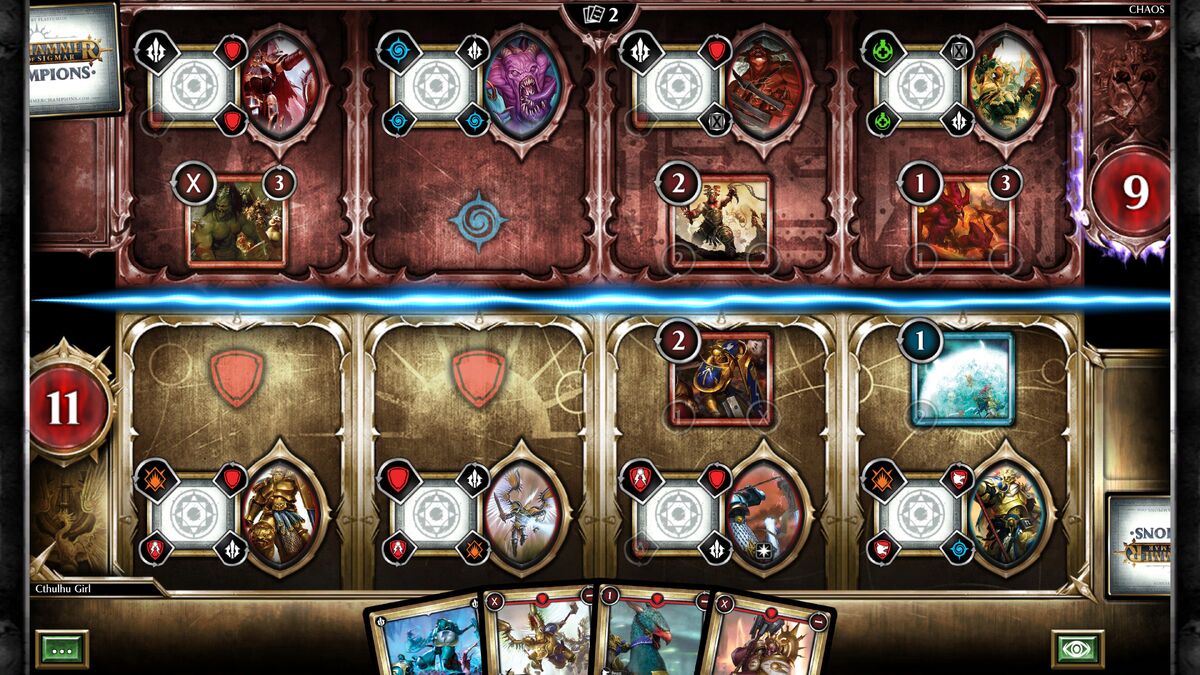
Champions has the dubious honor of being the first official video game in the Age of Sigmar line. In 2015, Age of Sigmar replaced the original Warhammer Fantasy line. Not only did it change the world’s lore, it shattered it: the Old World that many players had grown up with was completely eradicated, and in its place was a collection of distinct themed Realms. Many lovingly painted models were no longer playable and the initial rules roll-out was patchy at best. It’s safe to say that the change was divisive. Over time, as players have acclimated to the changes and new players have entered the hobby without any preconceptions about what a Warhammer fantasy setting should be, Age of Sigmar has grown to hold its own. Champions, a lane-based collectible card battler, tried to establish its own identity in the crowded CCG market by emphasizing heroic champions and limited actions per turn while pulling its lore and feel from the tabletop game. Unfortunately it lacked the staying power of its tabletop ancestor: the game’s servers were shut down on January 31st, 2022.
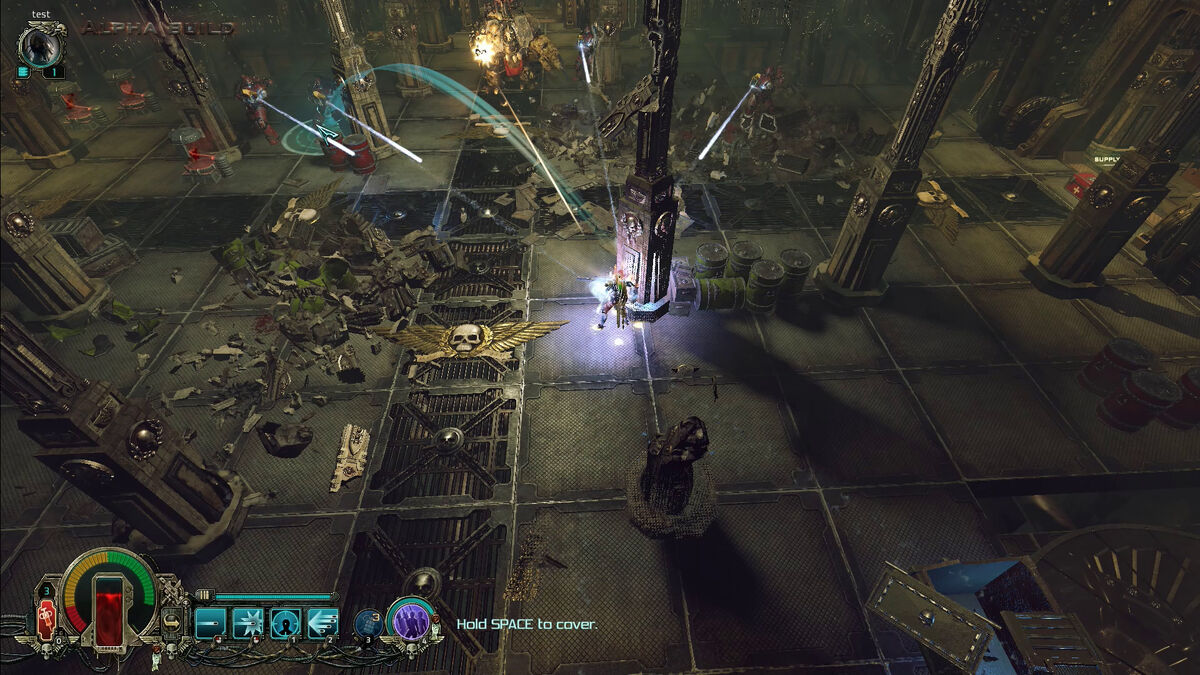
These two games fill the same role in the two different Warhammer universes: both are action-RPGs in the vein of Diablo, with Inquisitor-Martyr for the 40K fans and Chaosbane for the Fantasy lovers. The gameplay is fairly standard for the genre (kill enemies, grab loot, equip loot, kill more enemies, etc.) with a few character classes available and a host of mobs, levels, and bosses to charge through. Of course, the appeal is in the variety of items to gain and use as well as the ability to spec into different playstyles over time. This is a rare example of Games Workshop licensing fundamentally similar games across both settings, allowing players to pick their preference between the two.
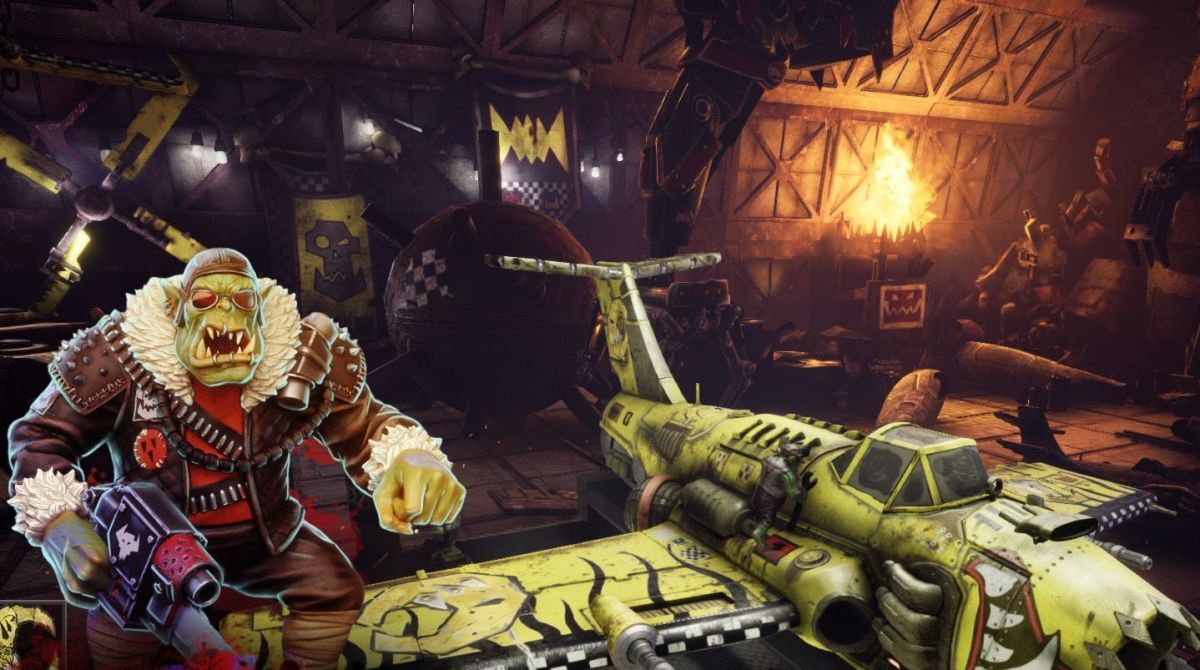
FLYING ORKS?!?!? That’s the entire pitch of Dakka Squadron, and frankly it’s a good one. Orks are the wild cards of 40K’s grimdark setting: capable of being menacing when needed, but just as frequently seen as comical. Their love of ramshackle equipment and poor diction is only exceeded by their bloody-minded pursuit of noise, speed, explosions, and combat. While most of the 40K games on this list trend towards the serious, Dakka Squadron speaks to the silliness and style that made 40K accessible even to casual players.
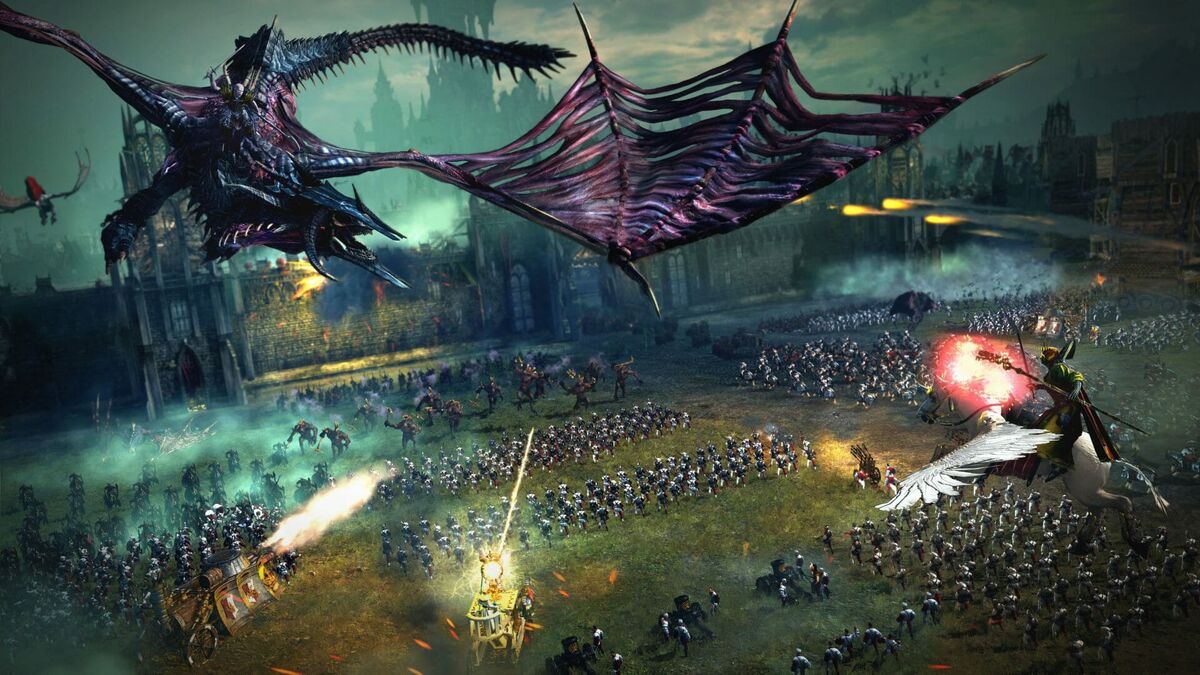
If Shadow of the Horned Rat laid the groundwork for a fantasy war campaign, the Total War: Warhammer series added layer after layer of warpstone-fueled innovation that would bring the IP to new heights. The historical Total War games already struck the perfect balance between map-based empire management and inspiringly huge real-time-pausable battles. Warhammer’s over-the-top ethos turned out to be a perfect fit. Each game in the series features a unique storyline, loads of playable factions, and all the juicy Warhammer flavor you could ask for.
Related New
Related